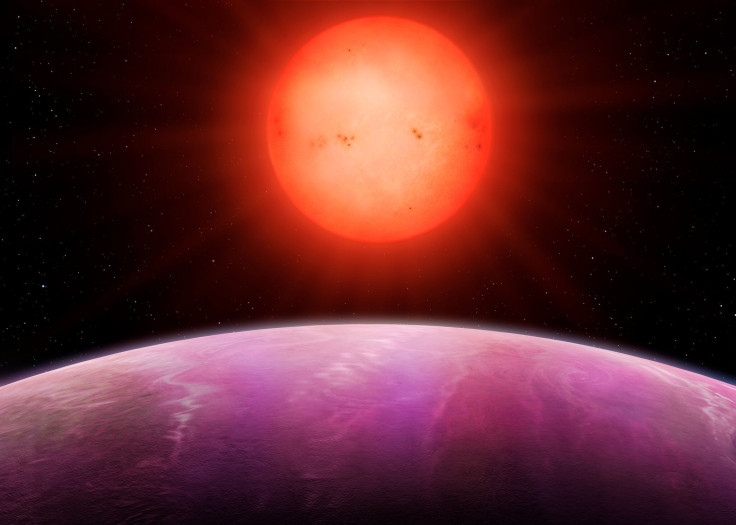Alien Planet Too Big To Exist: Astronomers Say Exoplanet Doesn't Belong

Astronomers have found a giant planet where it does not belong: orbiting tightly around a tiny star.
The scientists are saying their discovery contradicts popular models of how the planets formed.
A study in the journal Monthly Notices of the Royal Astronomical Society describes the planet as a “hot Jupiter” — a planet roughly the size and consistency of our own Jupiter, a gas giant, but orbiting much closer to its host. That host star is an M dwarf, a type of red dwarf star that is small and cool compared to average stars like our sun.
Red dwarfs are the most common type of star in the universe, but they aren’t the kind you see when you look up at the night sky because they are too dim for the naked eye. Still, their abundance makes them prime targets for scientists hunting for exoplanets, in the search for alien life. They also offer interesting conditions for studying the habitability of other worlds. For example, the Trappist-1 solar system discovery scientists announced earlier this year includes seven Earth-sized rocky planets tightly orbiting their red dwarf star, all close to one another, but the small size and lower temperature of that star means at least three of them might still be the right temperature to support life — within the star’s habitable zone.

Scientists found the hot Jupiter NGTS-1b by spotting it as it was passing in front of its own dwarf, from the vantage point of Earth. The enormous planet is only a few million miles away from its star and finishes an orbit in about two and a half Earth days. It has a temperature of almost 1,000 degrees Fahrenheit.
The Royal Astronomical Society refers to it as a “monster planet” because of its unexpected huge size.
Planetary formation theories suggest that small stars like this red dwarf are not home to planets as big as Jupiter, although rocky planets may form around them. By simply existing around a star that is half the size of our sun, NGTS-1b punctures a big hole in that idea.
According to the University of Warwick, the hot Jupiter’s size compared to the size of its star represents the smallest planet-to-star size ratio scientists have ever found.
“Despite being a monster of a planet, NGTS-1b was difficult to find because its parent star is so small and faint,” Warwick researcher Peter Wheatley said in the RAS statement. “Small stars like this red M-dwarf are actually the most common in the universe, so it is possible that there are many of these giant planets waiting to found.”
Lead study author Daniel Bayliss, also from Warwick, said the next step is for astronomers to find out how common this sort of setup is throughout the galaxy.
Beyond the search for alien life, hot Jupiters offer unique conditions that scientists aim to study to better understand planetary conditions in general.
“To date most exoplanet surveys have looked at stars like the sun, but most stars in the Milky Way are much smaller,” theoretical astrophysicist and study co-author Richard Alexander said in a statement from the University of Leicester. Discoveries like NGTS-1b are “opening a new window on the exoplanet population, and will offer key new insights into how planets form and evolve in different environments.”
© Copyright IBTimes 2024. All rights reserved.











